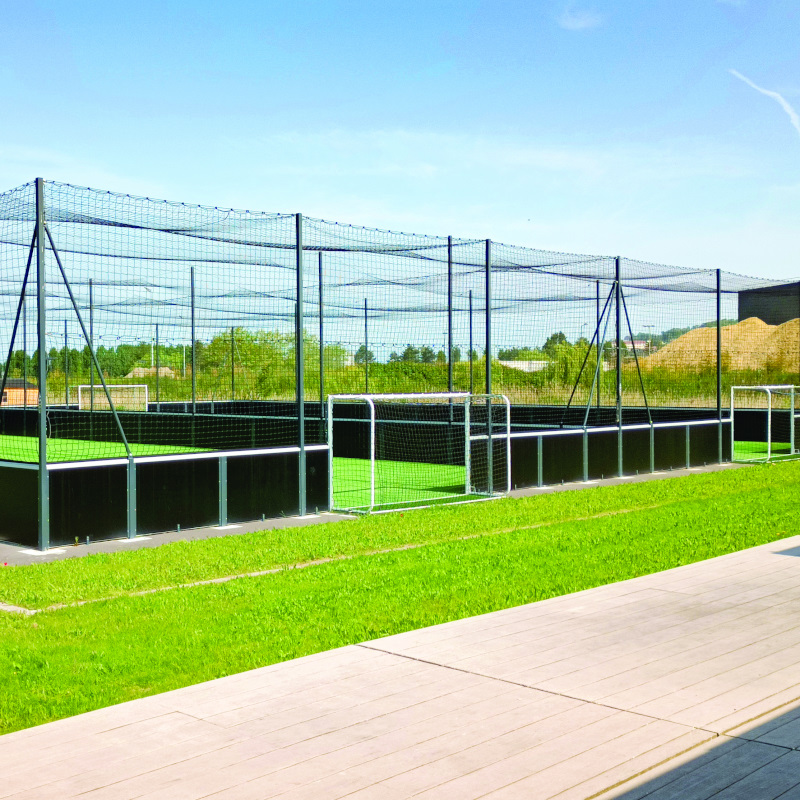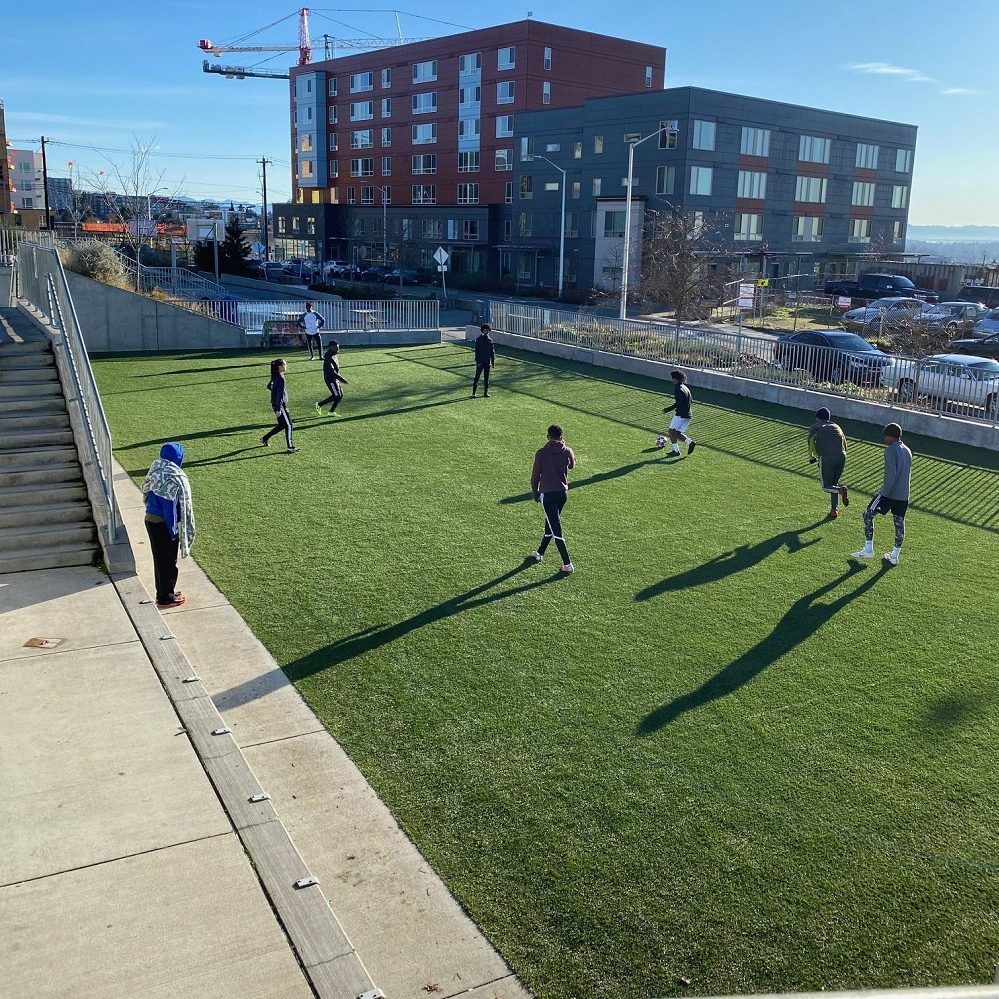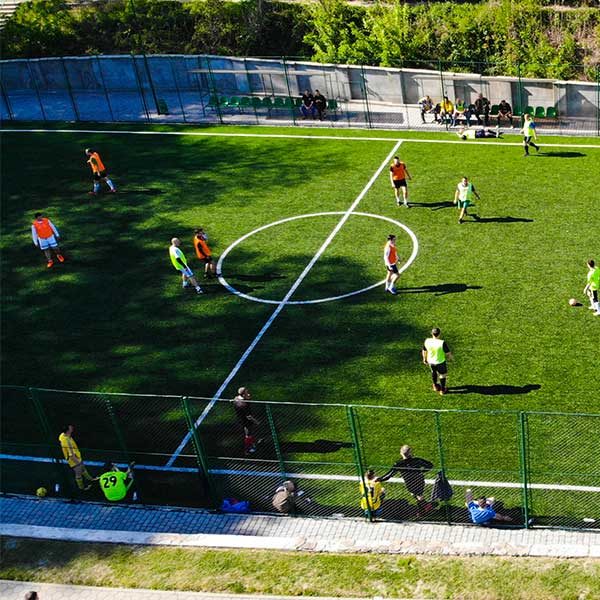Introduction: The Universal Language of Soccer
The Global Phenomenon of Soccer
Soccer, known as football in many parts of the world, is more than just a sport; it is a universal language that unites people across cultures, ages, and social classes. The beautiful game transcends geographical boundaries, creating a shared sense of community and excitement among fans and players alike. From intense professional matches in massive stadiums, packed with roaring crowds, to informal games played in backyards or on makeshift fields, the soccer pitch serves as a canvas for dreams, friendship, rivalry, and skill.
As one of the most widely followed sports, soccer has earned its place as a source of national pride for many countries. Icons like Pelé, Diego Maradona, and Lionel Messi have not only inspired millions with their talent but have also brought attention to the sport, cementing their legacies in history. This cultural significance, paired with the thrill of competition, creates a dynamic landscape for soccer enthusiasts. As we celebrate our fascination with the sport, it becomes clear that the journey from the backyard games to professional leagues is a testament to soccer’s rich history and enduring appeal.
The Importance of Understanding Techniques
For both novice and experienced players, mastering the techniques and rules associated with soccer enhances the enjoyment and quality of play. Understanding the fundamentals—be it dribbling, passing, shooting, or positioning—is critical for players aspiring to improve their skills. At the same time, fans who grasp the nuances of the game can better appreciate its intricacies and strategy, enriching their experience as spectators. This guide will explore the significance of the soccer pitch in shaping players’ experiences, the impact of grassroots initiatives that nurture young talent, the development of youth leagues as the groundwork for future stars, the rise of professional leagues that showcase elite players globally, and the role of various organizations in promoting soccer at all levels.

The Soccer Pitch: A Foundation for Play
1. Defining the Soccer Pitch
Dimensions and Markings
The soccer pitch is the playing surface where the game unfolds, designed to facilitate a fair and enjoyable competition, much like a hiking backpack with hydration bag that supports adventure and exploration. Its standard dimensions can vary slightly by level, but a professional field typically measures between 100 to 110 meters in length and 64 to 75 meters in width. The pitch is marked with white lines that define the different zones essential for gameplay, including the center circle, penalty area, and goal area.
- Goals and Corner Flags: At each end of the pitch, two goals are positioned, measuring 7.32 meters wide and 2.44 meters high. Corner flags, standing at a height of 1.5 meters, help indicate corners while also ensuring players adhere to field boundaries. These elements contribute to the organized play and assist in better communication among players, referees, and coaches during a match.
- Surface and Quality: The quality of the pitch’s surface can significantly impact the game’s flow and player’s performance. While natural grass is the traditional choice for professional play, many amateur fields now utilize high-quality artificial turf, which offers consistent playing conditions regardless of the weather. Maintaining the pitch through careful management, such as mowing, watering, and aeration, ensures a safe and enjoyable environment for all participants.

2. Backyard Games: The Foundation of Soccer’s Popularity
Informal Play
Backyard soccer games are often where many players first encounter the sport. These informal settings not only introduce children to soccer but also provide a space for unbounded creativity and fun.
- Accessibility: The beauty of soccer lies in its accessibility. It requires minimal equipment—typically just a ball and an open space—to play, making it easy for children and adults alike to engage in the sport. You don’t need a professional pitch; a backyard, park, or even a driveway can become a makeshift soccer field.
- An Environment for Exploration: In these settings, children learn the game’s fundamentals, from dribbling and passing to teamwork and sportsmanship. Playing in backyards encourages kids to use their imagination, develop their skills on their terms, and understand the essence of competition. These early experiences in soccer often foster a lifelong love for the game and can inspire future ambitions in sports.
3. Building Friendships and Skills
Social Interaction
Soccer played in backyards or parks fosters social interactions that go beyond the game itself.
- Teamwork and Cooperation: Playing soccer requires communication, teamwork, and strategy—skills that players learn during informal games. These gatherings often blossom into lasting friendships as players enjoy the thrill of competition and shared experiences.
- Skill Development: Backyard games provide a unique opportunity for players to hone their skills in a relaxed environment. As they practice dribbling, shooting, and passing, they develop confidence in their abilities. The camaraderie built during these games often translates into teamwork on organized teams, where players learn to trust and rely on each other during matches.
Youth Soccer Leagues: Cultivating Future Talent
1. Grassroots Initiatives
Community Development
Youth soccer leagues are pivotal in nurturing future talent. Grassroots initiatives play a critical role in laying a solid foundation for the sport, connecting young players with mentors, friends, and opportunities.
- Local Clubs and Organizations: Many communities have established clubs that organize youth leagues, where children learn the fundamentals of the game from trained coaches. Engaging local players often fosters a deeper connection within the community. Parents and families bond over shared interests in soccer, enhancing both attendance at games and local support for the clubs.
- Encouraging Inclusiveness: Many programs are dedicated to fostering inclusivity by ensuring gender, race, and economic background do not impede participation. Soccer’s global appeal transcends borders, making it essential to initiate programs that promote access to the sport within underrepresented communities, thereby nurturing a diverse array of talent.

2. Structured Training and Skills Development
Creating a Pathway
Youth soccer pitch leagues offer structured training programs that develop players’ abilities.
- Professional Coaching: Many youth leagues enlist certified coaches who use age-appropriate methods to teach fundamental skills, tactics, and sportsmanship. A structured approach ensures that young athletes receive guidance that sets the foundation for further development. Coaches often focus on creating a positive atmosphere where players feel encouraged, learning not just the game, but also important life skills such as leadership, discipline, and resilience.
- Competitive Opportunities: Engaging in competitive matches allows players to test their skills and learn how to handle pressure. This experience is invaluable for building confidence and resilience. Young athletes also have the opportunity to learn how to win graciously and lose with dignity.
3. Pathways to Professional Opportunities
Bridging the Gap
Emerging players who display exceptional talent in youth leagues may find pathways to professional opportunities.
- Talent Identification Programs: Many clubs have scouting initiatives that observe local competitions, identifying promising young talent who could transition into higher levels of play. Successful youth players who demonstrate skill and commitment often receive offers to train with professional academies.
- Scholarship Programs: Scholarships to soccer academies and schools can dramatically change a young player’s trajectory. These initiatives help promote their development, both as athletes and individuals, allowing them resources and support to improve their skills and academic growth.
Professional Leagues: The Pinnacle of Soccer
1. The Rise of Professional Soccer
Expanding Global Reach
Professional soccer pitch leagues have emerged as powerful entities that showcase talent, ignite passion, and draw millions of fans worldwide. The growing popularity of the game has led to the establishment of professional leagues in regions previously lacking structured soccer programs.
- Major League Soccer (MLS): Established in 1993, MLS has grown exponentially, expanding its reach across North America. The league not only provides opportunities for homegrown talent but also attracts international stars who continue to elevate the profile of soccer in the United States and Canada.
- European Leagues: The English Premier League (EPL), La Liga in Spain, Serie A in Italy, and others serve as exemplary models of professional leagues, nurturing world-class talent. The competitive nature of these leagues encourages progress and promotes significant player development and marketing opportunities.

2. Engaging the Fanbase
Building Community
Professional leagues have changed how fans engage with the sport, creating a community atmosphere that extends beyond the game itself.
- Diverse Fan Experiences: From brand engagement through merchandise to interactive pre-game activities, clubs encourage fans to participate beyond just attending matches. This approach cultivates a sense of belonging among supporters.
- Grassroots Programs: Many professional clubs invest in grassroots programs to strengthen ties with communities. Clinics, camps, and outreach initiatives encourage local engagement, fostering loyalty and increasing grassroots support.
3. The Evolution of Technologies in Leagues
Embracing Innovation
Modern professional soccer leagues are increasingly incorporating technology to enhance both the player and fan experience.
- VAR (Video Assistant Referee): The introduction of VAR has transformed decision-making in professional matches, ensuring accuracy and reducing controversy in officiating. Awareness of technology’s role in administering the game has become a significant aspect of professional soccer.
- Data Analytics: Teams now utilize data analytics for performance analysis, scouting, and injury prevention. Coaches and management rely on statistical insights to create strategies, monitor player development, and make informed decisions in player recruitment.
The Broader Impact of Soccer on Society
1. Community Building and Engagement
The Social Aspect of Soccer
Soccer often serves as a social glue, bringing people together and fostering community bonds. Local teams and clubs create gathering points for families and friends, forming a supportive network around the sport.
- Pathways for Engagement: Matches provide opportunities for social interaction and community involvement, whether as players, parents, or spectators. The shared experience of supporting a local team or enjoying games together creates lasting memories.
- Unified Emotions: The exhilaration of winning or the heartbreak of losing fosters a sense of camaraderie among supporters. This emotional investment elevates soccer from mere entertainment to a significant aspect of community identity.
2. Promotion of Healthy Lifestyles
Physical and Mental Health Benefits
Engaging in soccer—whether through playing or watching—actively promotes physical and mental well-being.
- Encouraging Active Lifestyles: Playing soccer as a form of exercise encourages individuals to develop an active lifestyle, contributing to better physical health. Regular participation helps promote cardiovascular fitness, coordination, and teamwork.
- Mental Resilience: Participating in sports helps build mental resilience and a sense of achievement. Individuals learn how to cope with challenges, manage stress, and overcome adversity—qualities that extend far beyond the field of play.

3. Supporting Cultural Exchange
Global Network
Soccer connects people from diverse cultures through a shared passion for the game, promoting cultural exchange and understanding.
- International Competitions: Events like the FIFA World Cup or club tournaments like the UEFA Champions League attract a global audience, showcasing talents from different nations and cultures. Viewers share in the excitement, creating a shared sense of community centered around their favorite teams.
- Cultural Festivals: Local soccer events often connect diverse communities, bringing together people from various backgrounds. These gatherings celebrate not just the sport but also the rich diversity of participating cultures and modern globalization.
4. Economic Impact
Soccer as an Industry
The soccer industry has grown exponentially, contributing significantly to economies around the world.
- Job Creation: Professional soccer leagues create job opportunities not only for players but also for coaches, support staff, officials, and administration. Moreover, local clubs often support the economy through supplies, equipment, and services.
- Tourism Revenue: Hosting major soccer events brings tourism revenue, as fans travel to attend matches, filling hotels and restaurants. The economic influx stimulates local businesses and promotes community development.
Conclusion: Embracing Soccer’s Timeless Journey
Celebrating the Game
The journey from backyard games to professional leagues illustrates the growth and evolution of soccer, reflecting its significance in our lives. Soccer can teach valuable lessons about teamwork, resilience, and sportsmanship, making its impact resonate far beyond the pitch.
Supporting Future Generations
As we lower ourselves to enjoy today’s matches and community games, it is essential to invest in future generations. Supporting local leagues, engaging in grassroots initiatives, and creating safe spaces for children to explore soccer enhances the continuum of passion for the sport.
Enjoying the Global Community
With its capacity to connect people across cultures, soccer embodies unity and joy. Fans, players, and communities can come together to enjoy the beautiful game, regardless of their backgrounds.
Moving Forward with Passion
As the world of soccer pitch continues to grow and evolve, the possibilities for young athletes, fans, and communities will expand even further. Embrace the love of soccer, whether you’re a player, coach, or passionate supporter. The future of this beautiful game promises excitement, connection, and endless opportunities for all who cherish it. So, lace up your boots, gather your friends, and step onto the soccer pitch. The adventure awaits—one kick at a time!
